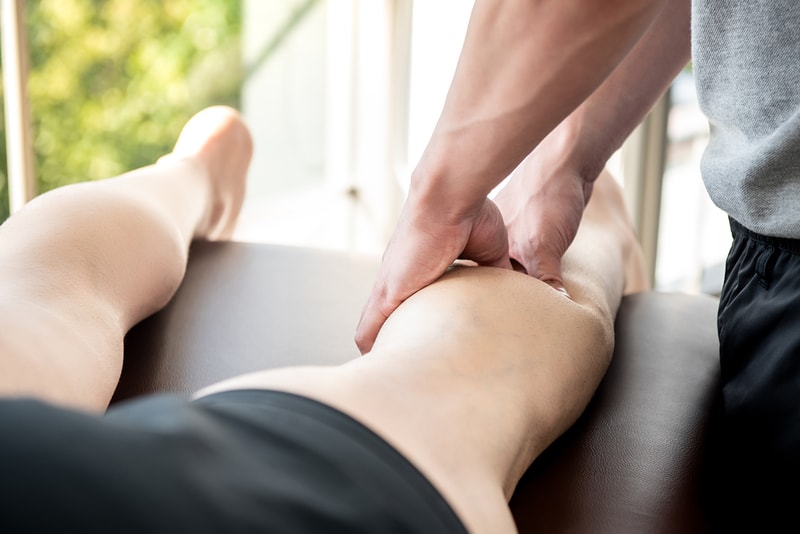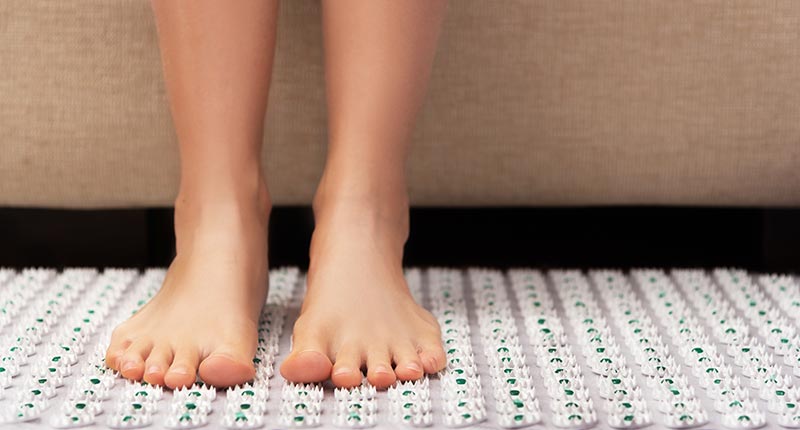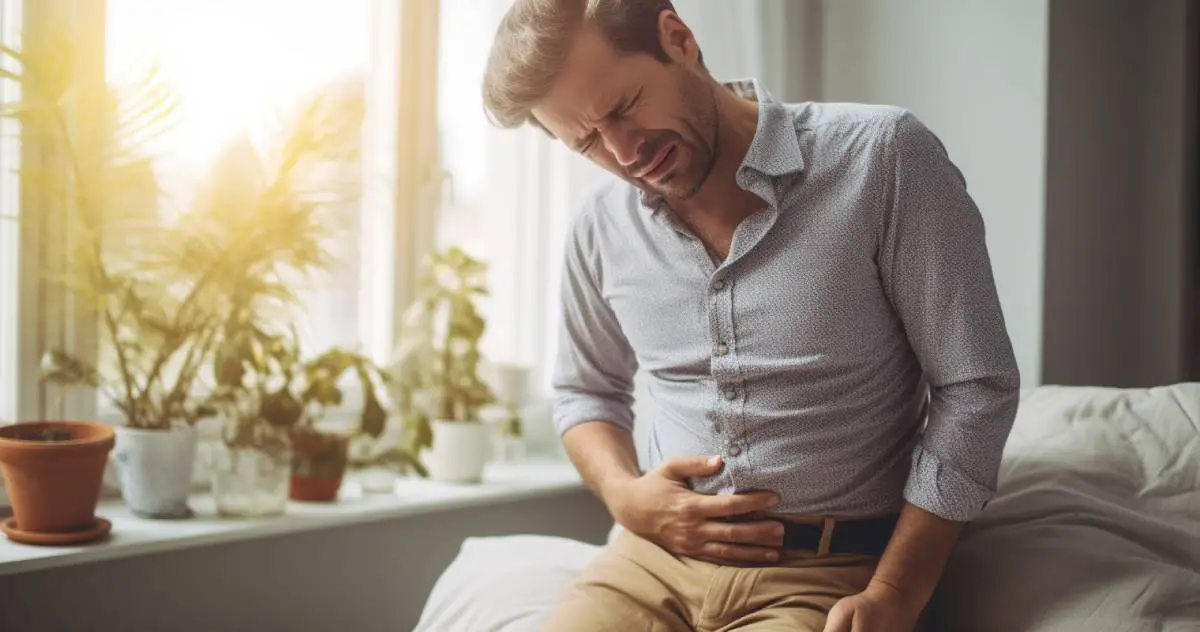Poor circulation in your legs can be caused by conditions such as diabetes, varicose veins, and peripheral artery disease. Left untreated, poor circulation in the legs could lead to amputation. Symptoms can include cramping in the legs while walking which then subsides when at rest, as well as numbness and tingling in the toes, feeling coldness in the feet, and wounds that do not heal properly. Poor circulation in the legs brings a higher risk of infection in the feet and legs and can even be life-threatening. If you’re experiencing any of these symptoms, you should consider these acupressure points for blood circulation in the legs.
What Are The Acupuncture Benefits For Poor Leg Circulation?
Traditional Chinese Medicine attributes poor leg circulation to a lack of energy to move the blood throughout the body. Therefore, using acupressure points for blood circulation in the legs can help by getting the energy moving again. This will improve blood flow to all parts of the body, including the legs. It does so by stimulating the release of leukotrienes and antihistamines which dilate the blood vessels and reduces tissue swelling.
Can Acupuncture Help With Poor Leg Circulation?

You should attend to poor leg circulation as soon as possible. Traditional Chinese Medicine and acupuncture for circulation can help. A study published in the Journal of Evidence-Based Complementary and Alternative Medicine suggests that acupuncture can affect blood flow of the peripheral, mesenteric, and retrobulbar arteries. Blood flow was significantly higher after stimulation of specific acupuncture points in healthy volunteers, as evaluated by Color Doppler imaging (CDI).
Acupuncture stimulates and releases stagnant energy but also enhances nutrient distribution and waste removal. Studies have shown that it can significantly lower blood pressure. Furthermore, once acupuncture treatment was stopped, its effects also disappeared. Acupuncture stimulates the nervous system, which releases biochemicals that benefit blood, tissue, and brain cells. Acupuncture for circulation releases endorphins and peptides into the bloodstream, addressing conditions related to blocked blood flow.
Tap The Sanyin Meridian

The Sanyin meridian tapping method promotes blood and lymph circulation in the lower body and includes the Liver meridian, Spleen meridian, and Kidney meridian, which mainly circulate on the inner side of the calf and thigh. The following acupressure points for blood circulation in the legs are particularly effective. This method recommends applying lotion to the legs after a bath, then cupping your hands and tapping along the three meridians on the calf three times.
1. Acupoint: KI-1 (Other Names: Kidney-1/Yong Quan/Gushing Spring)
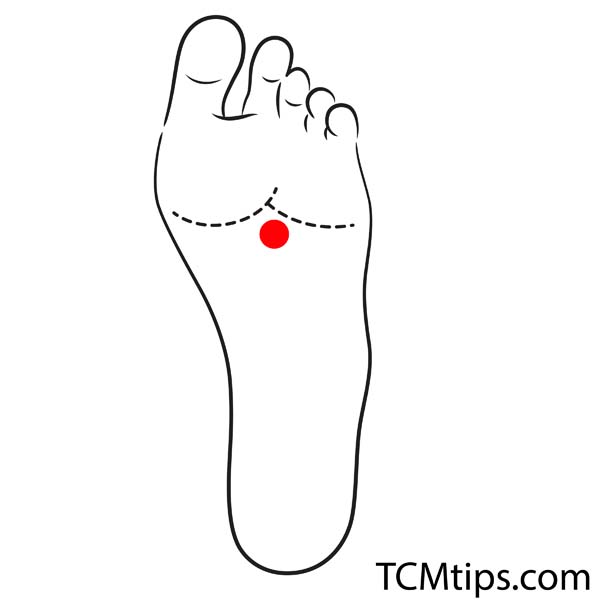
The first of the acupressure points for blood circulation in the legs is KI-1. It is located in a slight depression created when the foot is pointed downward, on the sole of the foot, and approximately 1/3 between the tips of the toes and the heel. KI-1 is the lowest acupressure point in the entire body and pulls qi, or energy, down in the body. This makes it effective in improving blood circulation in the legs. It can also treat hot sensations in the sole of the foot.
Other indications include head conditions such as loss of consciousness, headache, neck pain, dizziness, and mania. KI-1 is helpful for nausea and vomiting, as well as swelling of the pharynx, dryness of the tongue, and constipation.
It functions by descending excess from above, resuscitating, clearing heat, calming the Shen, tonifying Yin, and clearing empty heat. Interestingly, KI-1 is a Jing-Well point, which is where qi bubbles up, making it effective in reviving consciousness. It also treats fullness below the heart.
KI-1 is also one of the acupressure points for high blood pressure.
2. Acupoint: Liv-3 (Other Names: Liver-3/Tai Chong/Supreme Rush)

Liv-3 is located on the dorsum of the foot, in the depression proximal to the first metatarsal space. It is classified as the Yuan-Source point of the Liver meridian, as well as the Shu-Stream point of the Liver meridian. Yuan-Source points are useful in the treatment of diseases of the internal organs. They are where the Yuan, or primary, qi of the Zang-Fu organs passes and stays. Applying pressure to the Yuan-Source points stimulates the meridian’s energy and regulates the functioning of the internal organs. It also eliminates pathogenic factors and reinforces antipathogenic factors, treating the root cause of diseases. Yuan-Source points are often used in conjunction with the Luo, or connecting, point of the internally and externally related meridians.
As a Shu-Stream point, this is where the qi of the Liver meridian begins pouring down. Shu-Stream points are useful in relieving joint pain and heaviness.
Liv-3 improves circulation in the legs, which can help with difficulty in walking. In addition to relieving weakness, numbness, and pain in the lower extremities, it is indicated for vertigo, swelling and pain in the eyes, depression, hiccups, irregular menstruation, hernias, and epilepsy.
It functions by regulating Liver qi, subduing Liver Yang, regulating menstruation, calming the Shen, and nourishing the Liver Yin. It is an important and commonly used point, often in conjunction with LI-4, to move qi and blood through the body.
Liv-3 is also one of the 5 key acupressure points for hair growth.
3. Acupoint: SP-6 (Other Names: Spleen-6/San Yin Jiao/Three Yin Intersection)
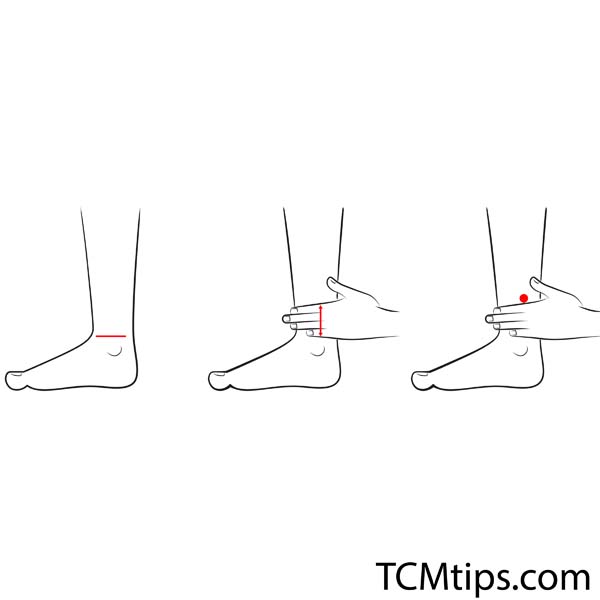
SP-6 is located on the medial aspect of the lower leg, 3 cun above the medial malleolus, and on the posterior border of the inner side of the tibia. It is classified as the crossing point of the Spleen, Liver, and Kidney meridians. That makes it one of the most versatile and commonly used acupressure points because it crosses all three meridians. As a result, it can treat a variety of conditions related to each of these organs.
In addition to being great for acupuncture for circulation, it is also indicated for many digestive, gynecological, and emotional conditions, as well as skin diseases, insomnia, headache, and dizziness.
It functions by strengthening the spleen, kidneys, and stomach. It also resolves dampness and brings harmony to the liver while nourishing blood and Yin. It cools and invigorates the blood, which is why it’s great for improving circulation in the legs. It also benefits urination and calms the Shen.
According to TCM, SP-6 is also one of the 10 best acupressure points for weight loss.

4. Acupoint: SP-9 (Other Names: Spleen-9/Yin Ling Quan/Yin Mound Spring)
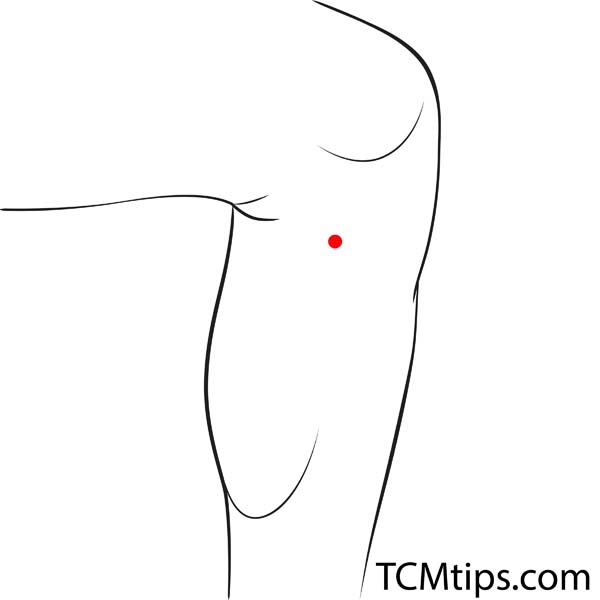
SP-9 is located in the depression posterior and inferior to the medial condyle of the tibia. You can most easily find it by running your thumb along the bone on the inner part of your leg until you find a hole or depression.
It is classified as a He-Sea point of the Spleen meridian. He-Sea points are where the qi of the meridian collect, going deep within the body and are used to treat rebellious qi.
Regarding circulation in the legs, SP-9 is indicated for pain in middle of the knee, as well as leg edema and diabetes. Additionally, it can treat dysuria, edema, and incontinence. It also helps with jaundice, diarrhea, abdominal distention, penile pain, vulvar pain, and dysmenorrhea. It functions by resolving dampness, regulating the spleen, and freeing the water passages and urination. SP-9 is the main point for resolving dampness in the lower jiao.
SP-9 is also one of the 5 acupressure points for restless leg syndrome that few people know about.
 P. Sze
P. Sze 